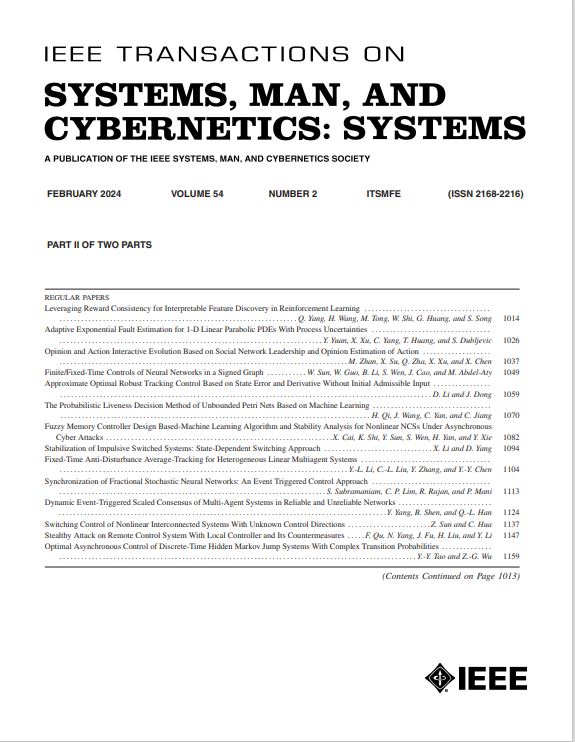A Novel Modeling Approach for Cumulative Belief Rule-Base With Joint Optimization and Rule Synthesis
IF 8.6
1区 计算机科学
Q1 AUTOMATION & CONTROL SYSTEMS
IEEE Transactions on Systems Man Cybernetics-Systems
Pub Date : 2025-02-11
DOI:10.1109/TSMC.2025.3534988
引用次数: 0
Abstract
Cumulative belief rule-based system (CBRBS) is a recent representative of explainable artificial intelligence (XAI). However, the use of CBRBS as XAI still faces many challenges, e.g., over-reliance on expert experience and applying unreasonable rule synthesis in the existing modeling process. Hence, a novel modeling approach is proposed for constructing CBRBS in the aim of providing a better XAI, in which a joint optimization model is proposed first to describe the mathematical model of parameter and structure optimization, and the corresponding algorithm is further designed to automatically achieve the joint optimization of CBRBS. Afterward, a domain-based calculation method of synthesis factor is proposed to develop a new rule synthesis method for CBRBS, which not only achieves the reduction of inefficient and inconsistent rules but also takes into account interpretability and generalization ability. In experimental analysis, the proposed modeling approach is employed to construct CBRBS for handling rice taste assessment and benchmark classification problems. The comparison results show that the proposed approach makes it possible for CBRBS to achieve a good balance between model complexity and inference accuracy. More importantly, the resulting CBRBS has better accuracy and lower complexity than some existing rule-based systems and classical classifiers.求助全文
约1分钟内获得全文
求助全文
来源期刊

IEEE Transactions on Systems Man Cybernetics-Systems
AUTOMATION & CONTROL SYSTEMS-COMPUTER SCIENCE, CYBERNETICS
CiteScore
18.50
自引率
11.50%
发文量
812
审稿时长
6 months
期刊介绍:
The IEEE Transactions on Systems, Man, and Cybernetics: Systems encompasses the fields of systems engineering, covering issue formulation, analysis, and modeling throughout the systems engineering lifecycle phases. It addresses decision-making, issue interpretation, systems management, processes, and various methods such as optimization, modeling, and simulation in the development and deployment of large systems.
 求助内容:
求助内容: 应助结果提醒方式:
应助结果提醒方式:


